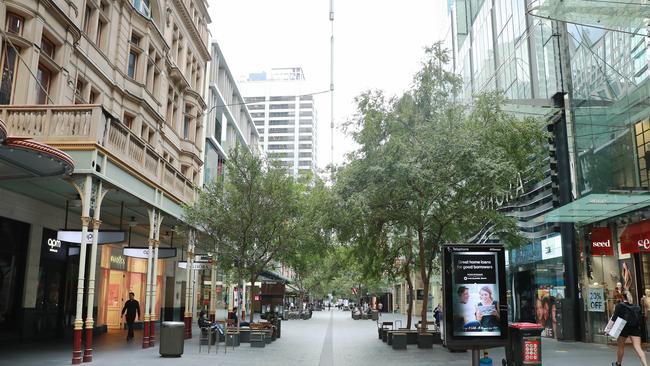Data reveals our traditional Monday to Friday work week is disappearing
There aren’t many Monday to Friday workers in our CBDs these days as the work week transitions but there are battles ahead between newly freed workers and nervous bosses.

The working week has been a staple since the first machine was switched on in the industrial revolution.
It persisted when office work arrived in the early 20th century and it dug in when the technology revolution promised to free workers from desks and time. It might not survive Covid.
As Australia transitions out of the pandemic, it’s clear the working week isn’t what it was. More people are working in different locations on different days of the week; more people are exploring the hybrid working day, work meetings have been recalibrated to the digital and most office workers like it that way. This is a transition period.
There are battles ahead between newly freed staff and nervous bosses; there are powerful forces pleading the case for CBDs and the employment future isn’t clear.
But, more than a year after workers fled the city, a template for the future of work is being etched by data, experts and the people, who used to be on the morning bus.

Monday
Where are you? The numbers on public transport in Australia’s biggest city, Sydney, are still down 45 per cent compared with two years ago and the number of trips on the road are down by 4 per cent. Given that more of those road trips are being made by trucks and parents dropping kids at schools, the commuter run is even lighter than the numbers suggest. You must be working from home.
Monday and Friday are the most popular days for remote work but at least you’re working. Traditionally Monday is the most common day for a sick day – three times that of Wednesdays – but fewer people are taking a sick day, even if they have a convincing cough. According to an ABS study of life under Covid last November, a quarter of those home workers who were sick chose to continue working rather than call in sick. This might be contributing to the belief of staff that they are 13 per cent more productive when they work from home but it’s more likely to do with the extra one hour and 17 minutes that are available when you don’t have to dress up and commute to work.
According to a NSW Treasury report on Remote Working Insights released in February, 49 of those minutes are spent with family, 19 minutes on domestic stuff and 13 per cent more on work. (Professionals average an extra 25 minutes on work). And, as for that 13 per cent boost in productivity, Treasury says other data supports it.
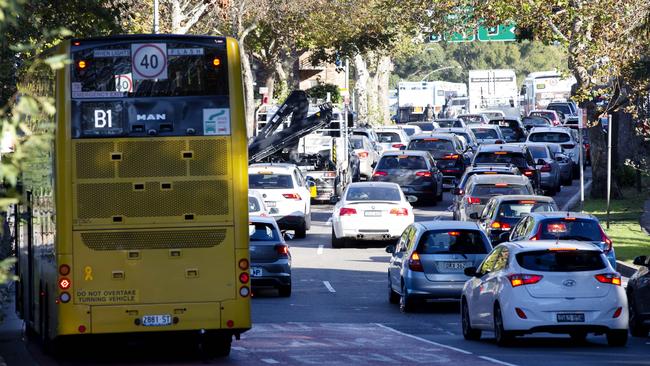
TUESDAY
The buses are a little fuller. Public transport trips are only down 42 per cent on two years ago and there are 30,000 more car trips under way (down 3.7 per cent from 2019). Tuesday, Wednesday and Thursday are the most popular days for coming into the office and, according to an EY study, what the workers want, the workers are getting. At least, so far.
When EY extracted Australian data from a global survey of worker attitudes to post-Covid work, it found a bolshie bunch. Having flexibility over where they work was either important or extremely important to 82 per cent and having flexibility over when to work was even more important at 87 per cent.
A third said where they work should be based on their personal preferences, three quarters want to determine when they start and finish work. Almost half (47 per cent) would like a four-day week, thank you very much. All these responses were more robust than the global average. As for productivity, 86 per cent of Australians said their productivity can be measured regardless of where they work (global average was 66 per cent).
EY partner, Matt Lovegrove, says the bolshiness of Australians is understandable in view of the country’s quick recovery but he adds that businesses offering short-term incentives for office work, such as parking allowances, will have to rethink the structure of work for the long term.
“We have a window here to ask questions about how we work,” he says. “It’s a relatively short window – maybe 12 months.
“Remember more than 50 per cent have said if I haven’t got flexibility, I’m going to quit, and that attitude is occurring at a time where there is growth in labour fluidity and voluntary labour movements are increasing.”
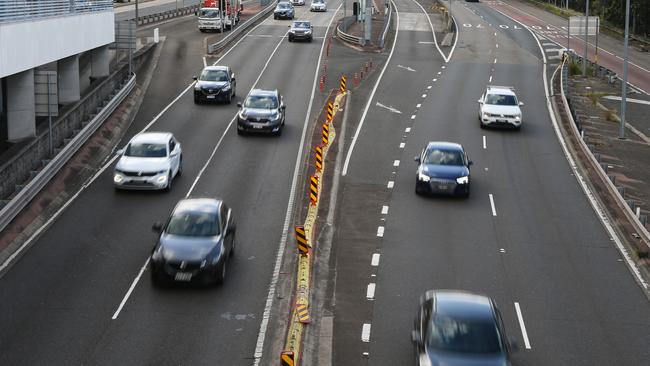
Wednesday
The numbers on public transport are edging up but are still 41 per cent less than pre-Covid. Road trips are the same as Tuesday but that lightening of the load is not spread evenly. According to a SGS Economics and Planning report from November last year residents of more affluent areas – the east and inner areas of Sydney, Melbourne and Brisbane are more likely to work from home (40 per cent) than those from outer areas (30 per cent).
But if you can’t get people into the office, maybe you can take the office to them. This is the thinking behind Melbourne start-up, Waterman Business Centres, which has reinvented co-working spaces for the post-Covid world.
“Before Covid, co-working was for small businesses and work was done in hubs near to the CBD,” says Waterman’s Nick Jbeily. “Now location has been freed from the CBD, our vision is to bring working spaces closer to where people live and have an ecosystem of everyone from ASX Top 500 to individual entrepreneurs,”
“It’s a hybrid model – not in the CBD, not at home so you don’t have the commute but you also don’t have distractions of the kids, pets or the fridge.”
The group has four hubs and plans for 200.
“We want to be a 20-minute drive for most Australians, including those in regional areas,” Jbeily says.
Most of the centres are in shopping centres. “They’re well located, the public transport is already sorted, there’s plenty of parking and lots of food and drink options,” he says. The hub-in-a-mall model offers most of the amenities of a CBD.
The group is already attracting big businesses like Fujitsu, which has reduced its office space in Melbourne CBD and rotates 150 staff through various hubs each week.
As to when people are choosing to work in hubs, Jbeily says the 9-to-5 routine is being tweaked with more coming in early and leaving early or coming in later and working later.
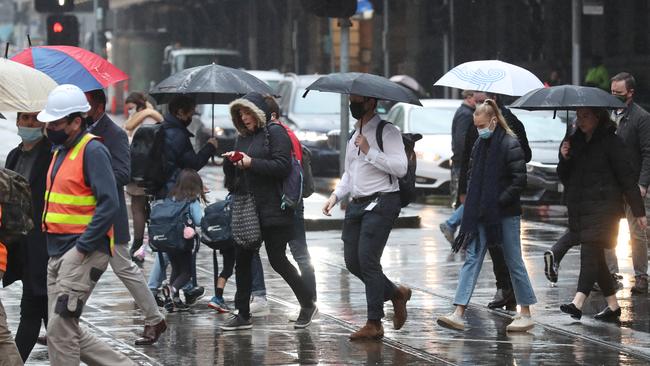
Thursday
More people are on public transport than any other day (the numbers are at 39 per cent pre-Covid) and the roads trips are the same as the previous few days. Thursday is the day most preferred for office work but even then, the working day looks different.
Matt Lovegrove says that given the strong consensus around the flexibility of work hours (87 per cent) and the desire of most to set their own start and finish times, the hybrid working day may be a longer-term feature than the hybrid week.
“Pre-Covid I would be away for a week every month and, when I was here, I would put on a suit, go into the office and spend much of the day talking to someone in Malaysia or elsewhere,” he says. “It didn’t make sense.
“Now I drive the kids to school, then I might meet a client in a cafe, drive into the office to meet with the team and, after about four hours, drive home to meet the kids and do more work at home.
“The flexibility around the working place is driving the flexibility around working hours and it’s increasingly hard to disaggregate those two.”
Work is looking more and more complicated. Different start and finish times, breaks during the day for family duties, night work, office-bound work, cafe meetings and hub meet-ups. The only reliable part of the week is the end of week drinks. And, yes, more of that is moving to Thursday night.
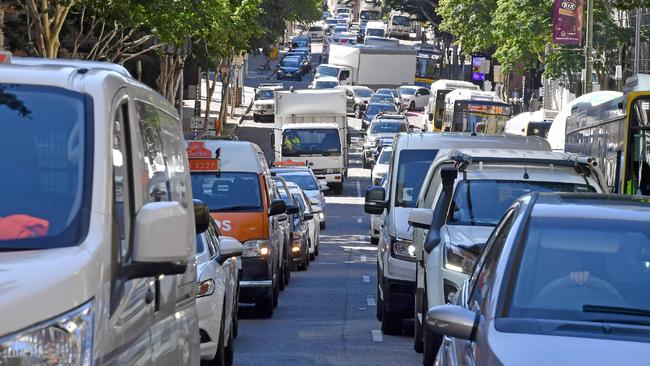
Friday
You’ve disappeared again. Two years ago, Friday was one of the busiest morning peaks, now there are 53 per cent fewer public transport trips. Compared with Thursday, there are 14 per cent fewer people on buses and even the morning car trips are down 10 per cent.
None of this is news for cafe owner, Nader Asace, who has two cafes around Sydney’s Pitt Street area.
“Even though Tuesday, Wednesday and Thursday are almost back to normal – 85 to 90 per cent – Friday is the worst day,” he says. “It’s maybe 55 or 60 per cent of what it used to be.
“People also seem to be starting a bit later and finishing much earlier. Instead of 7.15 to 7.30am being our busiest, it’s more like 7.45 to 8am. We used to close at 4.30 but now we close at 3pm because there isn’t enough traffic to justify opening longer.”
Asace is now applying for a liquor licence for one of his cafes so he can catch some of the theatre trade and Thursday/Friday night drinks.
There is one quirk about Friday trips into the CBD. There has been an increase in public transport trips into the CBD on Friday afternoon and evenings and those trips account for a third of all trips into the city that day.
Matt Lovegrove suspects it might have something to do with Friday drinks.
“At our Melbourne office, Friday is actually our busiest day and that might be the number of 25 to 35-year-olds who miss the social activities, the Friday funday,” he says.
Few will predict where or when the working week will end. The NSW Treasury report speculated that 30 per cent of office workers would work remotely at least some of the week; most workers say they prefer three days in the office and many employers are prepared to offer remote work one day a week. End-of-week drinks may offer another clue.
